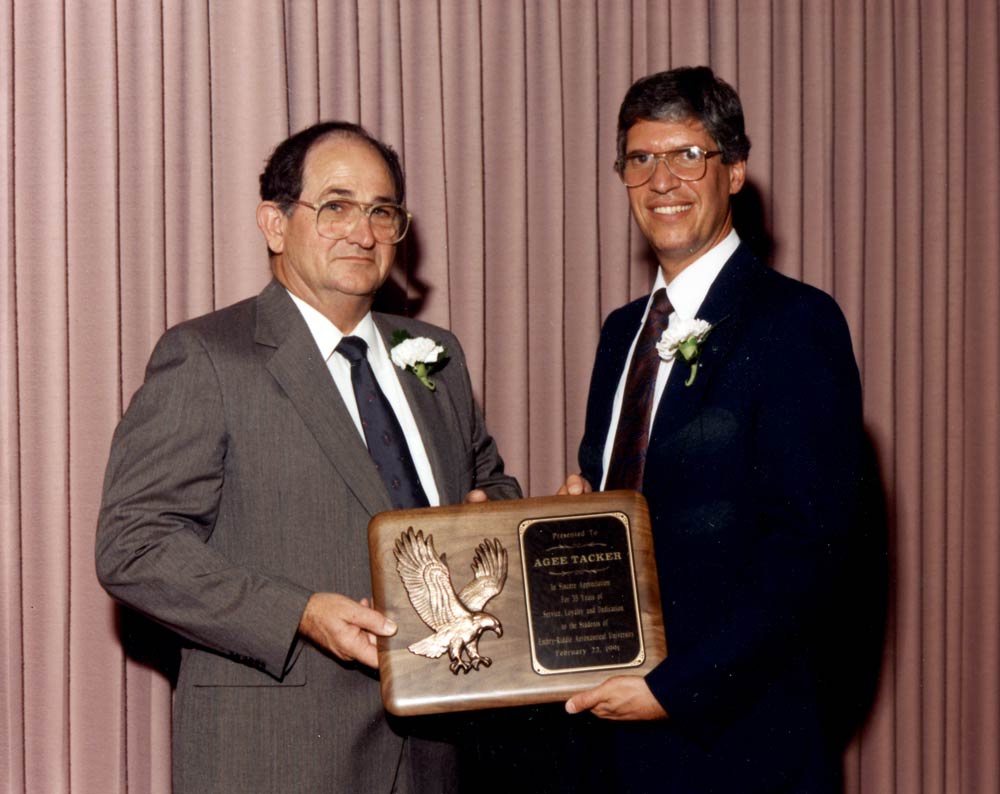From the Editor
We asked and you responded. Thank you, to all who completed the recent Lift Readership Survey online. You told us you prefer to read Lift in print (57 percent); you’re interested/very interested in reading about science, technology and engineering (78 percent); and you’re least interested in religion or faith-based issues (39 percent). You also said that Lift helps strengthen your personal connection to Embry-Riddle (81 percent). We think that’s a good thing. View a summary of the survey results, and let us know what you think: liftmag@erau.edu.
— Sara Withrow, Editor
‘McBlimp! McBlimp!’
Re: The Aviator Ant [spring 2018]
My favorite Klyde Morris strip was back in 1986, when I was a Daytona Beach Campus student and Riddle was somewhat of a monastery (male-female ratio of about 20-to-1). They had Miss USA or another beauty queen do an appearance at the UC. The place was packed with guys, naturally. Then word started filtering through the crowd that the McBlimp (back when McDonald’s had a blimp) was flying over, and the place practically emptied out. Everyone wanted to get a glimpse of the airship. The incident perfectly summed up ERAU air-geekery. Wes [Oleszewski (’87)] did a strip on it, and it was almost perfectly true to life, except he had someone in the crowd yelling “McBlimp! McBlimp!”
Dan Shoemaker (’88)
B.S. Aeronautical Studies
Skilled Pilots Don’t Want ‘Peanuts’
Re: Pilot Shortage [spring 2017] and related Feedback [fall 2017]
The airline industry is behind and close-minded in their “candidate process.” I am a retired USAF instructor pilot and evaluator. When I retired from the USAF, the shortage had not hit the major airlines yet and was only a forecast. At that time NO ONE as a T-6 instructor pilot was given a job by a major airline, regardless of their jet time from a major weapon system.
I took a T-1 sim instructor job with the assumption that I would get hired. After two years and no motion, I took a job as an instructor at Boeing. Now there are several, newly retired, or just out active-duty pilots who teach sims while looking for better jobs. One can do the job, explain the how and why, and the rules daily; but to the airlines, if it is not multi-engine and 100 hours in the past year, it does not count.
So why would I leave my job, pay and benefits, and attempt to support my family on a regional salary, with the hope of getting to start over at a major airline? When I retired from the AF that would have meant a pay cut of three-fourths of my military pay.
There is a pool of qualified pilots. There is not a pool of qualified pilots willing to force their family to live on peanuts.
The airlines have been and still are using the same formula that worked for them when there was an abundance of pilots. I see they have made no changes to their model. What does your business school teach about a business that does not make changes or explore other options when they are faced with a crisis?
Donovan “Scott” Dunn (’96)
Master of Aeronautical Science
Kudos to the Golden Eagles
Congrats to Prescott’s Golden Eagles [Back-to-Back Champs, fall 2017]. They have represented ERAU with excellence and portray our great school as an educational institution devoted to continuous individual and team development, commanding performance and leadership.
Ed Carroll (’74)
B.S. Aeronautical Studies

Clarification
In Memoriam [spring 2018] incorrectly identified the late James A. Henderson (’71) as the first chief pilot for the Daytona Beach Campus. According to flight department records, Faculty Emeritus A.C. Tacker, pictured here, who is retired and lives in Central Florida, was the campus’s first chief pilot.

